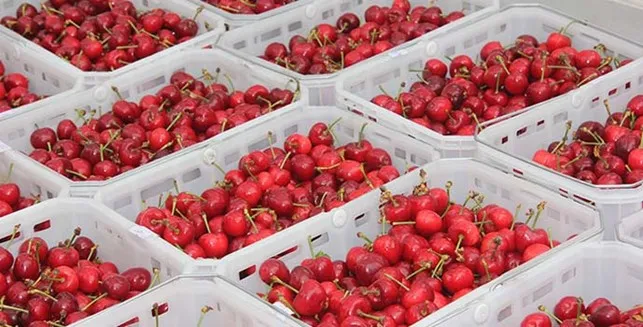
Cherries are highly sensitive to dehydration, and fruit that has not undergone proper post-harvest management will encounter issues upon reaching its destination. A study analyzed the dehydration dynamics of cherries based on their location inside the cold storage room under conventional handling conditions.
The Impact of Humidification in Cold Rooms
One of the main challenges fresh fruit faces during the post-harvest phase is dehydration, especially for delicate fruits intended for distant export markets. Cherries are particularly sensitive to this phenomenon. Their small size implies a high surface-to-volume ratio, which, combined with their thin and permeable cuticle, makes them prone to rapid water loss. Additionally, the stem shows evident signs of dehydration. Considering that the primary export destination for Chilean cherries is the Asian market, where transit can take up to a month, and that consumers value freshness as a key attribute, this presents both logistical and quality challenges.
Cherry dehydration not only results in a reduction in the weight exported but also affects the appearance of the stem, whose tendency to brown is one of the main aspects evaluated by Asian customers. Likewise, water loss leads to a reduction in firmness due to the lower turgor of the fruit.
Critical Post-Harvest Stages
The post-harvest phase for cherries encompasses several stages, from the field to the market destination. At each stage, the fruit is exposed to varying environmental conditions in terms of intensity and duration, which can contribute to fruit deterioration to a greater or lesser extent.
Therefore, it is essential to minimize waiting times and optimize handling at each stage to preserve cherry freshness. In recent years, the development of new technologies has improved the condition of fruits in distant destinations such as China. However, dehydration remains a challenge that requires refining current strategies and practices.
National Production and Its Challenges
Frutas de Chile anticipates a significant increase in production for this season, with an estimated output exceeding 130 million boxes. This growth will test the industry's and logistics' capacity, as bottlenecks must be avoided at various points in the post-harvest process. One critical aspect could be the time fruits spend in cold storage rooms awaiting processing, especially during peak harvest periods when the volume of cherries arriving at processing plants exceeds their capacity.
The Study: Use of Humidifiers in Refrigerated Rooms
To evaluate cherry dehydration during their stay in cold storage rooms before processing and determine the effect of using a high-pressure humidification system, a study was conducted. This involved monitoring Santina variety cherries for eight days under two different humidity management conditions.
Want to read the full article? Sign up for our free Cherry Times newsletter! This is the only way to receive each new article directly in your inbox and stay updated with high-quality advice and analysis. Don't miss this unique opportunity!
Sign up for the Cherry Times newsletter for free!
Cherry Times - All rights reserved












